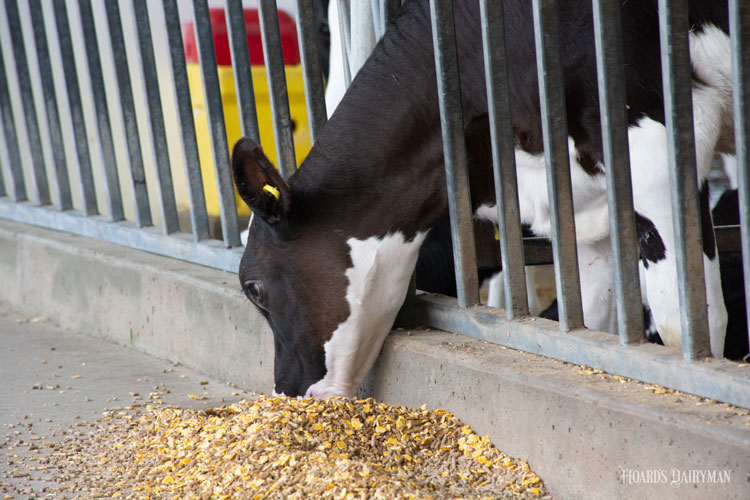
A very positive trend in dairy cattle research the past few years has been more studies on calves. However, in a Dairy Calf and Heifer Association presentation, University of Guelph’s Michael Steele pointed out that most of this research focuses on the first two months of life. That leaves a hole in research aimed at the postweaned calf, particularly the two months after weaning.
“Although we have focused so much time on preweaning, I think post-weaning is really critical,” he said.
He talked about development of not just the rumen, but the entire gastrointestinal tract. As milk feeding programs have changed on farms, he believes that starter composition needs to be tailored as well. It benefits the animal and the farmer to feed postweaned calves appropriately.
“These postweaned calves can take solid feed and turn it into growth very efficiently,” he explained. “They are the most efficient ruminant in nature.” He said calves of this age can convert 3.5 kilograms of feed into 1 kilogram of gain.
“I also think these calves can consume a lot more than we are giving them credit for,” Steele explained. “I think 2 to 4 months postweaning, especially if feeding high-forage diets, we could be limiting overall energy, and limiting growth as well.”
In addition to growth, Steele also pointed to research that showed reproductive benefits to feeding these calves more.
“We need to spend a lot more attention on that period,” he said. “We need to integrate how we feed calves postweaning with our preweaning diets.”
Get calves on the scale
Steele said one challenge of studying the postweaned calf is finding ways to measure feed intake in group situations in order to track average daily gain. “As soon as we tackle that, I think we’ll have a much better understanding,” he said.
One measurement that is fairly easy to collect on-farm is calf weights, but Steele estimates that less than 1% of dairies weigh their calves. In order to assess growth and average daily gain, tracking these weights is a necessity. At a minimum, Steele recommended weighing calves at birth and weaning.
Although it doesn’t take more than a minute or two to weigh a calf, Steele recognized that it is still a challenge for many farms. It does become easier as more farms incorporate technology into their calf systems, such as automated feeders where scales can be added.
When asked about weight tapes, Steele said if it’s the only option, to go ahead and do it. But, if a scale can be used, “I think it’s far better,” he said.








